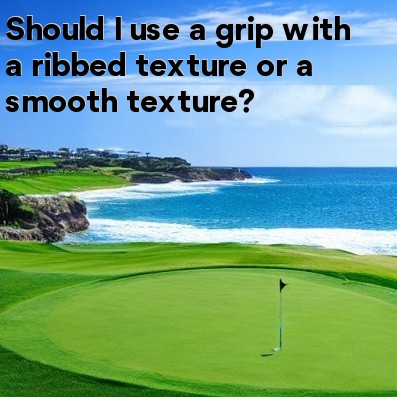
In Golf, Should I Use a Grip with a Ribbed Texture or a Smooth Texture?
Golfers often spend a considerable amount of time researching and experimenting with various equipment choices. One crucial element that significantly impacts the game is the type of grip used on the club. The texture of the grip can have a noticeable effect on a player's control and performance. In this article, we will analyze the merits of both ribbed and smooth grips to help you determine which option is best suited for your game.
- Ribbed Texture:
A ribbed texture grip, also known as a cord grip or a reminder grip, features small ridges or cords running along its surface. These grips are designed to provide enhanced traction and prevent the golfer's hands from slipping during the swing. Many professional golfers, as well as amateurs, prefer ribbed grips as they offer several advantages:
- Improved Stability: The ribs create friction between the hands and the club, providing a more secure grip. This increased stability can lead to a more controlled swing and better shot accuracy.
- Consistency: Ribbed grips act as a reminder to grip the club consistently. The ridges serve as a tactile reference point, ensuring that your hands are in the correct position each time you hold the club.
- Mild Pressure: Ribbed grips can help golfers maintain a light and consistent grip pressure throughout the swing. This can prevent excessive tension in the hands and arms, promoting a smoother and more fluid swing.
- Smooth Texture:
Smooth texture grips, on the other hand, do not have any visible ridges or cords. They provide a softer and more uniform feel compared to ribbed grips. Here are some advantages associated with smooth texture grips:
- Enhanced Sensitivity: Without the textural distractions of the ribbed grip, smooth texture grips allow for a more direct connection between the golfer's hands and the club. This increased sensitivity can help golfers better feel the clubface and make subtle adjustments to their swings.
- Increased Shot Feedback: Smooth grips provide immediate feedback on mishits or off-center strikes. Players are more likely to notice vibrations or irregularities in their shots, allowing them to diagnose and adjust their technique accordingly.
- Alternate Shot Trajectories: Some golfers believe that the lack of surface texture on smooth grips allows for slight variations in grip pressure and hand movement, resulting in different shot trajectories. This versatility can be advantageous when playing in challenging conditions.
Ultimately, the decision between a ribbed or smooth texture grip comes down to personal preference and playing style. Some golfers find that ribbed grips offer the stability and consistency they need, while others prefer the sensitivity and shot feedback associated with smooth grips.
It is important to note that golfers should try out both types of grips before making a final decision. Experimenting with different grip textures allows you to determine which one feels the most comfortable and provides the most control over your shots.
Regardless of the grip texture you choose, maintaining proper grip pressure and hand positioning is essential. Regularly inspecting your grips for wear and replacing them when necessary is also crucial to ensure optimal performance on the course.
In conclusion, whether you opt for a ribbed texture grip or a smooth texture grip, both have their own advantages. Assess your playing style, consider your preferences, and experiment with different grip textures to find the right fit for your game.





